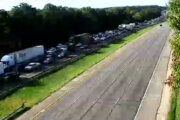Green initiatives are making their way into retirement communities across the country. While swapping out light bulbs and installing smart water systems can save money, community executives say these moves are desired by residents as well.
[See: 10 Places to Retire on a Social Security Budget.]
“My mom lives in one of our communities, and she’s the one with the hybrid, not me,” says Paul Chapman, executive vice president and chief development officer at Belmont Village, which owns 25 properties across the country as well as one in Mexico. To cater to environmentally-minded seniors like Chapman’s mother, retirement communities are deploying a variety of green initiatives in new properties while retrofitting old ones. As a bonus, these measures are helping communities and their residents save money, too.
Making energy efficiency a priority. When it comes to going green, many retirement communities start by focusing on energy. Lisa Hardy, CEO of Emerald Communities, says heat recovery is one area in which her company is focused, particularly as it completes work on its newest property, Heron’s Key in Gig Harbor, Washington. “That’s a big deal today and especially here in the Pacific Northwest,” she says.
However, communities aren’t simply installing new systems and hoping for the best. Instead, they are measuring impact to determine whether an upgrade is as green as it says it is. For instance, Ron Bunce, senior vice president of Equity Lifestyle Properties, says when his company installed LED street lights in one community, it also put individual meters on each light to get an exact figure on energy consumption. The company learned the LED fixtures resulted in 70 percent energy savings.
“We have an awful lot more data so we can properly analyze, say, air conditioning systems,” Chapman says. The results of those analyses are sometimes surprising. “Some of the more sophisticated systems haven’t delivered the results expected.”
[See: 10 Retirement Hot Spots in the U.S.]
Water conservation is critical out West. Smart use of water is another area in which retirement communities, particularly those out West, are striving to go green. “We take a close look at plant material and how do we water it,” Bunce says. Native plants are preferable to others that may require significantly more water than what is provided naturally. However, even native plants may require regular watering to look their best, and a new generation of smart irrigation systems is making it easier for retirement communities to keep landscaping looking fresh while minimizing water usage.
“The smart ones are slick,” Chapman says. “They’re connected to the internet so they know when it’s going to rain.” Then, if rain is expected in the afternoon, the sprinkler system won’t turn on in the morning. When the sprinklers do run, Belmont Village has installed bioswales at some properties to ensure any water run-off is filtered.
Other green materials and initiatives. As for the buildings themselves, retirement communities are investigating all sorts of green initiatives for their properties. “We’ve given the directive to our contractor to always use locally sourced material if possible,” Hardy says.
When locally sourced material isn’t available or preferable, Hardy says Heron’s Key is making use of recycled materials. “All the carpet we’re using is spun from recycled fishing nets,” Hardy says. Reclaimed wood is another repurposed building material making an appearance at the development.
Other communities are looking for ways to encourage their workers to be green. At Belmont Village Albany, a bicycle room and showers are available for those who want to bike to work. Meanwhile, Equity Lifestyle Properties is considering a shift in how its employees get around once they are on-site. “A lot of our communities are self-contained,” Bunce says. “We’re taking a close look at electric vehicles.”
[See: 50 Affordable Places to Buy a Retirement Home in 2016.]
How LEED certification fits in. LEED, which stands for Leadership in Energy and Environmental Design, is the most well-known third-party verification program for green buildings. Projects earn points based upon their sustainability features, and those points can correlate to four LEED ratings: certified, silver, gold or platinum.
Green building materials can cost more initially, but retirement communities hope to recoup that money through long-term savings. In addition to saving money on the bottom line, Chapman says residents benefit as well with lower rents and reduced energy costs for those who pay their own utilities. It’s a win-win-win with retirement communities, residents and the environment all benefiting from going green.
More from U.S. News
How Much You Need to Buy a Retirement Home in 10 Cities
Best Places for Snowbirds to Retire
How Retirement Communities Are Going Green originally appeared on usnews.com







